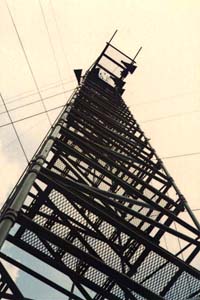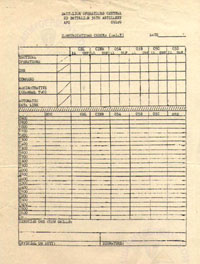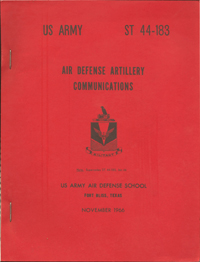| If you do
NOT see the Table of Contents frame to the left of this page, then
Click here to open 'USArmyGermany' frameset |
||||||||||||||||||||||||||||||||||||||||||||||||||||||||||||||||||||||||||||||||||||||||||||||||||||||||||||||||||||||||||||||||||||||||||||||||||||||||||||||||||||||||||||||||||||||||||||||||||||||||||||||||||||||||||||
|
Command
& Control |
||||||||||||||||||||||||||||||||||||||||||||||||||||||||||||||||||||||||||||||||||||||||||||||||||||||||||||||||||||||||||||||||||||||||||||||||||||||||||||||||||||||||||||||||||||||||||||||||||||||||||||||||||||||||||||
|
|
||||||||||||||||||||||||||||||||||||||||||||||||||||||||||||||||||||||||||||||||||||||||||||||||||||||||||||||||||||||||||||||||||||||||||||||||||||||||||||||||||||||||||||||||||||||||||||||||||||||||||||||||||||||||||||
|
||||||||||||||||||||||||||||||||||||||||||||||||||||||||||||||||||||||||||||||||||||||||||||||||||||||||||||||||||||||||||||||||||||||||||||||||||||||||||||||||||||||||||||||||||||||||||||||||||||||||||||||||||||||||||||
|
|
||||||||||||||||||||||||||||||||||||||||||||||||||||||||||||||||||||||||||||||||||||||||||||||||||||||||||||||||||||||||||||||||||||||||||||||||||||||||||||||||||||||||||||||||||||||||||||||||||||||||||||||||||||||||||||
| This
page is still "under construction"
and will undergo many changes
and additions in the next few weeks.
However, comments, suggestions, and corrections are very much appreciated!!! This is a highly complex but very interesting topic, but with your help I feel we can put something together that is both accurate as well as informative. I am looking for a lot of help from any vets who were part of this elaborate air defense network. |
||||||||||||||||||||||||||||||||||||||||||||||||||||||||||||||||||||||||||||||||||||||||||||||||||||||||||||||||||||||||||||||||||||||||||||||||||||||||||||||||||||||||||||||||||||||||||||||||||||||||||||||||||||||||||||
| AIRCENT Air Defense - 1960s and early 1970s | ||||||||||||||||||||||||||||||||||||||||||||||||||||||||||||||||||||||||||||||||||||||||||||||||||||||||||||||||||||||||||||||||||||||||||||||||||||||||||||||||||||||||||||||||||||||||||||||||||||||||||||||||||||||||||||
| (Source: various sources) | ||||||||||||||||||||||||||||||||||||||||||||||||||||||||||||||||||||||||||||||||||||||||||||||||||||||||||||||||||||||||||||||||||||||||||||||||||||||||||||||||||||||||||||||||||||||||||||||||||||||||||||||||||||||||||||
|
||||||||||||||||||||||||||||||||||||||||||||||||||||||||||||||||||||||||||||||||||||||||||||||||||||||||||||||||||||||||||||||||||||||||||||||||||||||||||||||||||||||||||||||||||||||||||||||||||||||||||||||||||||||||||||
|
|
||||||||||||||||||||||||||||||||||||||||||||||||||||||||||||||||||||||||||||||||||||||||||||||||||||||||||||||||||||||||||||||||||||||||||||||||||||||||||||||||||||||||||||||||||||||||||||||||||||||||||||||||||||||||||||
| (Source: Die Luftwaffe 1950 bis 1970: Konzeption, Aufbau und Integration, 2006) | ||||||||||||||||||||||||||||||||||||||||||||||||||||||||||||||||||||||||||||||||||||||||||||||||||||||||||||||||||||||||||||||||||||||||||||||||||||||||||||||||||||||||||||||||||||||||||||||||||||||||||||||||||||||||||||
Air Defense Missile Belts |
||||||||||||||||||||||||||||||||||||||||||||||||||||||||||||||||||||||||||||||||||||||||||||||||||||||||||||||||||||||||||||||||||||||||||||||||||||||||||||||||||||||||||||||||||||||||||||||||||||||||||||||||||||||||||||
| COMMAND AND CONTROL | ||||||||||||||||||||||||||||||||||||||||||||||||||||||||||||||||||||||||||||||||||||||||||||||||||||||||||||||||||||||||||||||||||||||||||||||||||||||||||||||||||||||||||||||||||||||||||||||||||||||||||||||||||||||||||||
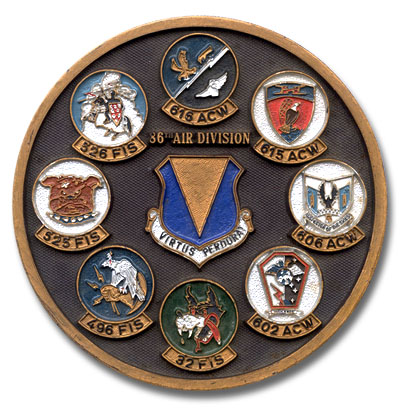 86th Air Division (Defense) Gaggle Plaque |
||||||||||||||||||||||||||||||||||||||||||||||||||||||||||||||||||||||||||||||||||||||||||||||||||||||||||||||||||||||||||||||||||||||||||||||||||||||||||||||||||||||||||||||||||||||||||||||||||||||||||||||||||||||||||||
|
|
||||||||||||||||||||||||||||||||||||||||||||||||||||||||||||||||||||||||||||||||||||||||||||||||||||||||||||||||||||||||||||||||||||||||||||||||||||||||||||||||||||||||||||||||||||||||||||||||||||||||||||||||||||||||||||
|
SURFACE-TO-AIR
MISSILE UNITS |
||||||||||||||||||||||||||||||||||||||||||||||||||||||||||||||||||||||||||||||||||||||||||||||||||||||||||||||||||||||||||||||||||||||||||||||||||||||||||||||||||||||||||||||||||||||||||||||||||||||||||||||||||||||||||||
|
|
||||||||||||||||||||||||||||||||||||||||||||||||||||||||||||||||||||||||||||||||||||||||||||||||||||||||||||||||||||||||||||||||||||||||||||||||||||||||||||||||||||||||||||||||||||||||||||||||||||||||||||||||||||||||||||
| USAFE AIR DEFENSE UNITS - 1950s - 60s | ||||||||||||||||||||||||||||||||||||||||||||||||||||||||||||||||||||||||||||||||||||||||||||||||||||||||||||||||||||||||||||||||||||||||||||||||||||||||||||||||||||||||||||||||||||||||||||||||||||||||||||||||||||||||||||
|
||||||||||||||||||||||||||||||||||||||||||||||||||||||||||||||||||||||||||||||||||||||||||||||||||||||||||||||||||||||||||||||||||||||||||||||||||||||||||||||||||||||||||||||||||||||||||||||||||||||||||||||||||||||||||||
| (1) courtesy www.slobberinwolfhounds.com (32nd TFS web site) | ||||||||||||||||||||||||||||||||||||||||||||||||||||||||||||||||||||||||||||||||||||||||||||||||||||||||||||||||||||||||||||||||||||||||||||||||||||||||||||||||||||||||||||||||||||||||||||||||||||||||||||||||||||||||||||
|
|
||||||||||||||||||||||||||||||||||||||||||||||||||||||||||||||||||||||||||||||||||||||||||||||||||||||||||||||||||||||||||||||||||||||||||||||||||||||||||||||||||||||||||||||||||||||||||||||||||||||||||||||||||||||||||||
| NIKE-HERC Command and Control | ||||||||||||||||||||||||||||||||||||||||||||||||||||||||||||||||||||||||||||||||||||||||||||||||||||||||||||||||||||||||||||||||||||||||||||||||||||||||||||||||||||||||||||||||||||||||||||||||||||||||||||||||||||||||||||
| General Information | ||||||||||||||||||||||||||||||||||||||||||||||||||||||||||||||||||||||||||||||||||||||||||||||||||||||||||||||||||||||||||||||||||||||||||||||||||||||||||||||||||||||||||||||||||||||||||||||||||||||||||||||||||||||||||||
| (Source: Wayne Scarpaci, HHB 69th ADA Gp, 1968-70) | ||||||||||||||||||||||||||||||||||||||||||||||||||||||||||||||||||||||||||||||||||||||||||||||||||||||||||||||||||||||||||||||||||||||||||||||||||||||||||||||||||||||||||||||||||||||||||||||||||||||||||||||||||||||||||||
|
||||||||||||||||||||||||||||||||||||||||||||||||||||||||||||||||||||||||||||||||||||||||||||||||||||||||||||||||||||||||||||||||||||||||||||||||||||||||||||||||||||||||||||||||||||||||||||||||||||||||||||||||||||||||||||
| (Source: 32nd AADCOM The News, Special Orientation Edition, October 1981) | ||||||||||||||||||||||||||||||||||||||||||||||||||||||||||||||||||||||||||||||||||||||||||||||||||||||||||||||||||||||||||||||||||||||||||||||||||||||||||||||||||||||||||||||||||||||||||||||||||||||||||||||||||||||||||||
| 'Invisible' units protect skies, an article on the MCC's at Boerfink and Lauda has been moved to the Missile Control Centers Page, Air Defense section. | ||||||||||||||||||||||||||||||||||||||||||||||||||||||||||||||||||||||||||||||||||||||||||||||||||||||||||||||||||||||||||||||||||||||||||||||||||||||||||||||||||||||||||||||||||||||||||||||||||||||||||||||||||||||||||||
|
|
||||||||||||||||||||||||||||||||||||||||||||||||||||||||||||||||||||||||||||||||||||||||||||||||||||||||||||||||||||||||||||||||||||||||||||||||||||||||||||||||||||||||||||||||||||||||||||||||||||||||||||||||||||||||||||
| AN/MSG-4 Missile Monitor | ||||||||||||||||||||||||||||||||||||||||||||||||||||||||||||||||||||||||||||||||||||||||||||||||||||||||||||||||||||||||||||||||||||||||||||||||||||||||||||||||||||||||||||||||||||||||||||||||||||||||||||||||||||||||||||
| 1963 | ||||||||||||||||||||||||||||||||||||||||||||||||||||||||||||||||||||||||||||||||||||||||||||||||||||||||||||||||||||||||||||||||||||||||||||||||||||||||||||||||||||||||||||||||||||||||||||||||||||||||||||||||||||||||||||
| (Source: ROTCM 145-70, Branches of the Army, Oct 1963) | ||||||||||||||||||||||||||||||||||||||||||||||||||||||||||||||||||||||||||||||||||||||||||||||||||||||||||||||||||||||||||||||||||||||||||||||||||||||||||||||||||||||||||||||||||||||||||||||||||||||||||||||||||||||||||||
| Fire
Distribution System AN/MSG-4 (Missile Monitor) The Missile Monitor is designed for employment with the field army to integrate the field army air defense with the air defense system operated by the Air Force. It is a fully mobile fire distribution system utilizing standard military vehicles. Missile monitor provides facilities for an AADCP normally established at group level, and incorporates up to four battalion fire distribution systems. Designed for use with surface-to-air missile systems in the field army, it provides a rapid and accurate exchange of information between AIRCENT command elements and missile batteries. Information on the location and identity of aircraft is continuously collected, displayed at the AADCP, and disseminated to the integrated elements. Each fire unit transmits operational status to the AADCP, where it is displayed. Information is automatically exchanged with adjacent AADCP's and received from tactical air force units. The air defense commander observes the overall air defense situation, directs fire distribution, and supervises fire unit operations as required. Battalion fire distribution systems may be employed independently in small air defense areas. The AADCP operations room contains display consoles used for surveillance, tracking, and tactical monitoring operations. Electronic computers update, store, and provide continuous target data to these consoles and to the integrated missile batteries. The electronic display includes the location and identity of all aerial objects in the defense area and those targets selected for attack by each fire unit. |
||||||||||||||||||||||||||||||||||||||||||||||||||||||||||||||||||||||||||||||||||||||||||||||||||||||||||||||||||||||||||||||||||||||||||||||||||||||||||||||||||||||||||||||||||||||||||||||||||||||||||||||||||||||||||||
|
||||||||||||||||||||||||||||||||||||||||||||||||||||||||||||||||||||||||||||||||||||||||||||||||||||||||||||||||||||||||||||||||||||||||||||||||||||||||||||||||||||||||||||||||||||||||||||||||||||||||||||||||||||||||||||
|
|
||||||||||||||||||||||||||||||||||||||||||||||||||||||||||||||||||||||||||||||||||||||||||||||||||||||||||||||||||||||||||||||||||||||||||||||||||||||||||||||||||||||||||||||||||||||||||||||||||||||||||||||||||||||||||||
| 1966 | ||||||||||||||||||||||||||||||||||||||||||||||||||||||||||||||||||||||||||||||||||||||||||||||||||||||||||||||||||||||||||||||||||||||||||||||||||||||||||||||||||||||||||||||||||||||||||||||||||||||||||||||||||||||||||||
| (Source: US Army Air Defense School, Student Outline, March 1966) | ||||||||||||||||||||||||||||||||||||||||||||||||||||||||||||||||||||||||||||||||||||||||||||||||||||||||||||||||||||||||||||||||||||||||||||||||||||||||||||||||||||||||||||||||||||||||||||||||||||||||||||||||||||||||||||
| (1) Purpose. A fire distribution system makes it possible to observe and influence the entire air battle scene from the widest viewpoint so separate actions of numerous batteries can be supervised and unified into an integrated defense. The purpose is to bring about a balanced and timely distribution of fire agains any raid, in a logical order of tactical priority, and thereby achieve an optimum kill with the given weapon's capability. (2) General description of the AN/MSG-4 fire distribution system (Missile Monitor). The AN/MSG-4 is a mobile fire distribution system designed for the use with the field army to control the fire of Nike Hercules and Hawk guided missile systems. The AN/MSG-4 is composed of two basic subsystems, the AN/MSQ-28 (AN/MSQ-56) subsystem located at group or brigade level, and the AN/MSQ-18 (AN/TSQ-38) subsystem located at battalion and battery levels. (3) AN/MSQ-18 (AN/TSQ-38) subsystem. (4) AN/MSQ-28 (AN/MSQ-56) subsystem. the WMC and entered into a second memory storage. (5) Block organization and data flow. (6) Methods of operation. Missile Monitor may be operated in six different switch-selected methods of operation. These are essentially different ways of channeling ADL information. Three of these methods of operation are used in the tactical employment of the system, two are used during system emplacement and for test purposes, and one method is used for emergency operation. (7) Operating personnel and duties (officer and enlisted). (8) Power requirements. (9) Trailer-mounted electronic shop AN/MSM-34. There are three electronic shop trailers with the AN/MSQ-28 equipment. Each major component of the AN/MSQ-28 has a trailer to house spare parts and test equipment for maintenance purposes. |
||||||||||||||||||||||||||||||||||||||||||||||||||||||||||||||||||||||||||||||||||||||||||||||||||||||||||||||||||||||||||||||||||||||||||||||||||||||||||||||||||||||||||||||||||||||||||||||||||||||||||||||||||||||||||||
|
||||||||||||||||||||||||||||||||||||||||||||||||||||||||||||||||||||||||||||||||||||||||||||||||||||||||||||||||||||||||||||||||||||||||||||||||||||||||||||||||||||||||||||||||||||||||||||||||||||||||||||||||||||||||||||
| (Source: US Army Air Defense School, Student Outline, March 1966) Technical note: ADL came in two varieties: PCM (Pulse Coded Modulation) and FSM (Frequency Shift Modulation); these were (roughly) analogous to "pulse" and "tone" dialing modes on the telephone, respectively.... Also, remember that we (in the MSG-4 system) had "pushbutton phones" in the mid-1960s! When did they come into common civilian use?) |
||||||||||||||||||||||||||||||||||||||||||||||||||||||||||||||||||||||||||||||||||||||||||||||||||||||||||||||||||||||||||||||||||||||||||||||||||||||||||||||||||||||||||||||||||||||||||||||||||||||||||||||||||||||||||||
| AN/MSG-4 Cabling and Communications (1) Basic types of communications. (2) Console communications facilities. The console communications facilities consist of telephone instruments, transmit control circuits, operator's telephone unit, and telephone connecting station. (3) State-of-alert function. The state-of-alert circuits receive the audiofrequency signals indicating air defense warnings (RED, YELLOW, or WHITE) and provide visual indications. In addition, these circuits supply digital air defense warning data for transmission by ADL to the fire units, (4) Army Area Communications System. Radio and wire systems may be used to provide communications circuits for voice and automatic data transmission. |
||||||||||||||||||||||||||||||||||||||||||||||||||||||||||||||||||||||||||||||||||||||||||||||||||||||||||||||||||||||||||||||||||||||||||||||||||||||||||||||||||||||||||||||||||||||||||||||||||||||||||||||||||||||||||||
| 1968 | ||||||||||||||||||||||||||||||||||||||||||||||||||||||||||||||||||||||||||||||||||||||||||||||||||||||||||||||||||||||||||||||||||||||||||||||||||||||||||||||||||||||||||||||||||||||||||||||||||||||||||||||||||||||||||||
| (Source: US Army Field Manual FM 44-95, AIR DEFENSE ARTILLERY EMPLOYMENT, NIKE HERCULES, April 1968) | ||||||||||||||||||||||||||||||||||||||||||||||||||||||||||||||||||||||||||||||||||||||||||||||||||||||||||||||||||||||||||||||||||||||||||||||||||||||||||||||||||||||||||||||||||||||||||||||||||||||||||||||||||||||||||||
|
||||||||||||||||||||||||||||||||||||||||||||||||||||||||||||||||||||||||||||||||||||||||||||||||||||||||||||||||||||||||||||||||||||||||||||||||||||||||||||||||||||||||||||||||||||||||||||||||||||||||||||||||||||||||||||
| (Source: Email from Ralph Dodds) | ||||||||||||||||||||||||||||||||||||||||||||||||||||||||||||||||||||||||||||||||||||||||||||||||||||||||||||||||||||||||||||||||||||||||||||||||||||||||||||||||||||||||||||||||||||||||||||||||||||||||||||||||||||||||||||
| MSG4 Deployment to Germany, March 1960 I stumbled across your website doing a search on my name. I was really pleased to find your site. I was the first operations officer of the MSG4 Det, and later one of the 3 shift leaders, until I was reassigned to the 94th Group S3 Office where I did Operational Readiness evaluations of the 24 Nike units. I was delayed in going back to the US due to the arrival of a baby girl in June 1963. As Operations Officer, I was greatly involved in getting the 6 battalions and their 24 fire units electronically integrated with the WMC. I don`t remember the date when all 24 console lights were glowing and the data links worked reliably but all involved breathed a sigh of relief. I have very fond memories of the outstanding military technical personnel at the hill, a selfless group. I think I can still remember the battalions under the 94th Group and their call signs. |
||||||||||||||||||||||||||||||||||||||||||||||||||||||||||||||||||||||||||||||||||||||||||||||||||||||||||||||||||||||||||||||||||||||||||||||||||||||||||||||||||||||||||||||||||||||||||||||||||||||||||||||||||||||||||||
| ANSWERS TO QUESTIONS FROM THE WEBMASTER: Q: When was the MSG4 Detachment formed? Was it in Germany or was it formed in the US and then transferred to Germany when the MSG4 equipment was shipped to the 94th? I think Tom Legere mentions some of the answer in his text. The package was formed at a test site known as Site Monitor, a few miles from Ft Bliss proper. Don`t know the start date. I was the chief of the CDG (Coder Decoder Group) branch, Electronics Dept of the school. All of the branch personnel went to the Hughes school on the CDG and then we formed the branch to teach maintenance on the CDG, primarily to NATO personnel, but also some US Army soldiers. I was overdue for an overseas tour and jumped at the chance to go to Germany. (Before the CDG branch, I attended the Martin FUIF school and then helped organize the FUIF branch, Electronics Dept. We taught maintenance on the FUIF equipment used in CONUS. My main job was going to the different defense areas in the US and orient the battalion personnel to fire control by electronic means. The FUIF was the equivalent of the CDG in the MSG4 setup.) The MSG4 package was organized at Site Monitor and the word put out for volunteers to man and train with the MSG4 detachment and eventually go to Germany. The testing by the Arty board had been going on for some time when I joined and was completed just after I joined. The operations personnel consisted of several first Lts, about 16 second Lts and a detachment commander Capt Fitzgerald. The maintenance personnel as described by Tom made up the other part of the MSG4 detachment. We trained for maybe 2 weeks or so and then received orders to leave for Germany. This was march 1960, I think. I was promoted en route and became the Ops officer of the detachment when we arrived in Kaiserslautern, Ger. The 32d Bde and 94th Arty Group were in different kasernes in Ktown. Q: Can you tell me anything about the organization of the MSG4 Det? Were the personnel assigned to the det primarily used to man the scopes, or did the detachment also perform other responsibilities (communications, maintenance and repair, etc)? The Detachment had a small Hqs, with the operations Pers. in one section and the maintenance pers in the maintenance section. The Det was under the Hqs, 94th Arty Group. There were Hughes Co pers to provide support, if needed. The arty personnel were to man the WMC (Lts) and the EM the RPC and manual AADCP. The maint. personnel were on site to take care of the equipment and generators. All of the soldiers working on 479 were under the Det. CO. The maint personnel were Signal Corps. Once operations were started we had 3 shifts of operations pers. Worked 3 days, 3 nights and off 2 days During exercises or actual alerts, the entire det. stayed on the hill. Had our own mess. Obviously it was going to take some time to get our equipment ready as we had to electronically integrate the 24 batteries and their CDGs and the 6 Bn OCs. So all of the Lts were assigned to batteries to learn that side of the job. They were returned when we needed them to man the MSG4 equipment, some months later. That was a very good idea. Q: I assume that the MSG4 equipment was mobile. Was it completely installed in trailers or was it moved into fixed structures on the hill (479)? Yes the equipment was mobile and the equipment stayed in the trailers. A maintenance man stayed in the rear of the WMC van, monitoring the data links. When there was a big problem, the operations pers evacuated the van and the maintenance pers took over. At the opposite end of the WMC was the station for the ops officer. One of the Hughes personnel (ex army Communications) built a small switchboard for voice commo to the SOC, 24 fire units and 6 bn ops officers. All commands and authentication procedures went thru here. SOC to WMC to BNs/fire units. The WMC was accessed thru the AADCP side door. The RPC and radar vans were nearby. Q: Was there any integration into the Air Force control system (412L) or any other NATO command and control system in operation at that time? If so, can you provide a brief description. Sometime after we became operational, I think, the 412L system was installed at the SOC at Langerkopf and we had an electronics data link to the WMC. Army pers manned the consoles that we worked with. I`m not sure if the consoles were 412L or some equipment installed for just the Army use. The WMC and the fire units could use the data (symbols) to designate targets to the batteries. The biggest problem we had was accurate symbology associated with an aircraft. The WMC/fire unit accuracy got to be pretty good. The SOC data wasn`t quite as good, as I remember. Q: Can you provide the call signs in effect for that period? The only one of the 6 bns I can remember today is that the 2d Bn, 56th Arty was Chrome. |
||||||||||||||||||||||||||||||||||||||||||||||||||||||||||||||||||||||||||||||||||||||||||||||||||||||||||||||||||||||||||||||||||||||||||||||||||||||||||||||||||||||||||||||||||||||||||||||||||||||||||||||||||||||||||||
| (Source: CW-4
Emile (Tom) Legere, USA-Ret) NOTE: For additional doctrinal and technical details, see Ed Thelen's wonderful Nike Missile web site) |
||||||||||||||||||||||||||||||||||||||||||||||||||||||||||||||||||||||||||||||||||||||||||||||||||||||||||||||||||||||||||||||||||||||||||||||||||||||||||||||||||||||||||||||||||||||||||||||||||||||||||||||||||||||||||||
| AN/MSG-4
Weapons Monitoring Center It was my honor to serve as Command and Control Officer in both the G-4 and G-3, Plans Sections, Hq. 32nd AADCOM, during the period 1975 - 1978. My primary duties involved the early fielding of the AN/TSQ-73 Command and Control System and the implementation of a Direct Support System for the AN/GSA - 77 Terminal Equipment (BTE). Additionally, I was also the Maintenance Officer for the first deployment of the AN/MSG-4 Weapons Monitoring Center with the 94th ADA Group in March 1960 to Hill 479, Bann, Germany. I will be pleased to contribute to your efforts to compile a history of the 32nd AADCOM in Europe. I think that I know where many of the ghosts are buried and will try to help in keeping your facts straight. Since you have expressed a particular interest in the deployment of the MSG-4 to Germany in 1960, I will start there, and provide the AN/TSQ-73 deployment information with another message later on. In late 1958, I was an enlisted (SFC) Radar Instructor with the USA Signal School at Ft. Monmouth, N.J. The School was tasked to assign an NCO, and, I was selected, to attend a 17 week AN/MSQ-28 Weapons Monitoring Center course at the Hughes Aircraft Company Facility, located at Fullerton, Ca. The assignment was TDY enroute to the USA Air Defense Board at Ft. Bliss, TX. As I recall (remember, this was 46 years ago), the WMC Course began at Fullerton on or about 1 Dec. 1958. My classmates were mostly all E-6 and E-7 NCO's drawn primarily from Signal Corps Radar and Communications assignments, a couple of Signal Corps Warrant Officers, and a couple of Signal Corps Lt's. There were also a couple of NCO's assigned by the USA Air Defense Board. The class materiel was all Greek to the majority of us as we were introduced to strange things like BOOLEAN ALGEBRA, BINARY ARITHMETIC, AND and OR GATES, FLIP-FLOPS, and other things like MEMORY DRUMS, REMOTE STARTS and SEQUENCERS. The Weapons Monitoring Center was, except for some display circuitry, completely transistorized, something that was completely new to the Army, and had a Memory Drum to store track and Fire Unit Data. What made this unique, was that for the first time, the Army would have a capability of maintaining automatic data updates on the location and speed of a large numbers of aircraft with minimal operator updating. The Memory Drum provided storage for up to 100 LOCAL Tracks (Aircraft Radar returns) detected by the Collocated AN/MPS-23 three-dimensional Radar (Another first for the Army) which sent Target range, azimuth, and height data to the Radar Data Processing Center (RDPC) for processing into digitized track data, which was then passed, by cable, to the WMC for possible assignment to up to 32 subordinate Hercules or Hawk Fire Units for action. In addition to the 100 Local Tracks stored, the WMC could store up to 92 REMOTE Tracks provided by adjacent MSG-4 Units (this has special significance later, when the MSQ-28 was deployed to Europe), and up to 8 Battalion Tracks provided by up to 4 subordinate AN/MSQ-18 or AN/TSQ-38 Battalion Operation Centrals (BOC's), each of which was capable of semi-automatically generating 2 Battalion Tracks (1 per console - the BOC DID NOT have a Memory capability) based on radar video provided by it's collocated Defense Acquisition Radar (Usually an AN/GSS-1 Radar, the mobile version of the WWII AN/TPS-1D) - NOTE: The Defense Acquisition Radar (AN/GSS -1) was still the BOC Radar as late as 1978, and was maintained primarily with salvaged parts from cannibalized TPS-1 and GSS-1 radars stored and provided by the Lexington Army Depot, Kentucky. Back to MSG-4 deployment: The WMC Course was 19 weeks in length rather than 17 weeks as stated above, although we did have a two week break during the 1958 Christmas and New Year period, when the Hughes Aircraft Facility closed down for those holidays. The Course was completed in April 1959, and we then reported for duty with the USA Air Defense Board, where we learned that we would participate in the Army Acceptance Tests of the prototype AN/MSQ 28 AADCP System (WMC, RDPC, and AN/MPS-23 Radar) to be conducted at SITE MONITOR, an Installation about 15 miles east of Fort Bliss, Tx. Subordinate to the AADCP were four AN/MSQ-18 Battalion Operation Centers, and as I recall, a mixture of 16 Hercules and Hawk Fire Units (a Hercules Battery was 1 Fire Unit, and a Hawk Battery was 2 Fire Units, since a Hawk Battery, at that time was capable of two simultaneous engagements. Later (1975), with the fielding of the TRIAD configuration, a Hawk Battery was capable of three simultaneous engagements, with its three Firing Platoons). The TRIAD configuration had significant impact on Command and Control when the TSQ-73 was deployed, and especially when the GEADGE system was deployed. (I'll talk about that when I cover the AN/TSQ-73 deployment). My primary duty was to integrate the subordinate BOC's and fire units prior to each individual test and to monitor equipment performance during the conduct of that test. Integration consisted of establishing communications with the subordinate units and to ensure that all Missile Battery Data Link (MBDL) information was transmitted and received between the WMC, the BOC's, and fire units correctly. (Following text inserted 5-18-2004) This was accomplished at one of four identical consoles, by the utilization of that console's Fire Unit Selection Push Buttons (one for each of 32 fire units), and the horizontal Command Panel which contained, going right to left, a Track Ball, up to ten Voice Communications Push Buttons, then separate push buttons for the following Commands: There were also two REFERENCE Control Pushbuttons; TRANSMIT ONE, and TRANSMIT ALL (Use of these pushbuttons would cause either ONE selected LOCAL or Remote Track, or ALL Local and Remote Tracks to be transmitted to ALL BOC's and Fire Units interfaced with the WMC.) An additional pushbutton was provided - The HOOK push button. The Console's Plan Position Indicator (PPI) provided digital display of detected targets by separate symbology For FRIEND, FOE, or UNKNOWN aircraft, and the geographical location of each fire unit, and the target pairing to that fire unit. If available, live targets would be used for integration, but in most instances, a SIMULATED TARGET representing a POINT IN SPACE was generated by Operation of the WMC SIMULATION PANEL. The procedure was to HOOK a target by placing a HOOK Symbol over the selected target symbol by means of a Track Ball (Similar to the operation of a "Mouse" used with today's PC's), and depressing the HOOK pushbutton which caused the target symbol to expand in size. The pushbutton associated with the unit being integrated would be illuminated GREEN, indicating the Fire Unit was READY for assignment. Depressing (Selecting) the Unit's pushbutton would cause it to turn RED indicating that the unit was in the process of engagement. The WMC operator would then depress the appropriate ENGAGE Command pushbutton, causing a MBDL COMMAND MESSAGE to be transmitted to the selected Fire Unit. Simultaneously, a blinking dashed pairing line would extend from the fire unit symbol to the assigned target symbol indicating that that target had been assigned to that fire unit. When the Battery Control Officer (Hercules) or the Tactical Control Officer (Hawk) correlated the assigned target symbology generated by the MBDL MISSILE BATTERY DATA LINK data received and processed by the Battery Coder-Decoder Group, with the video provided by his local acquisition radar (HIPAR or LOPAR for Hercules, or PAR or ICWAR for Hawk) on his tactical PPI display, he would then designate the target to the Target Tracking Radar (Hercules) or the Illuminator Radar (Hawk). Designation of the target to the Tracking/Illuminator Radar would automatically cause an ACKNOWLEDGE message to be transmitted to the BOC and WMC. The BCO/TCO could also manually acknowledge by pushing a button (Acknowledge ???) provided at his Console. When the Acknowledge message was received by the WMC, the blinking pairing line would cease to blink, but remain dashed, and the Acknowledge Message would also be displayed on the Battery Read-Out Panel. When the fire unit TTR/Illuminator LOCKED-ON to the target, it would cause the coordinates of the TTR/Illuminator acquired target to be transmitted to the BOC and WMC. This would cause the dashed pairing line to become solid, terminating at the point at which TTR/Illuminator was LOCKED-ON. If the BCO/TCO had acquired the assigned target video the pairing line would intersect with the assigned target symbology on the WMC PPI. If the BCO/TCO had designated the incorrect target video, the Pairing Line would terminate at the point designated by the BCO/TCO, telling the WMC Operator that the Fire Unit was engaging the wrong target, and he could then transmit the Appropriate command to the fire unit telling the BCO/TCO to terminate that engagement. When the Fire unit launched it's Missile (Hercules) or Missiles (Hawk), a firing message would automatically be transmitted to the BOC and WMC, causing that status to appear on the Battery Read-Out panel. After the completion of the engagement the BCO/TCO would evaluate the results of the engagement by determining if he still had target video. If no video remained, a KILL message would be transmitted, and if video remained a NO KILL message would be transmitted. This entire procedure could be performed silently without verbal exchange between the participants, for purposes of communications discipline. Once the integration had been successfully completed with ALL of the units scheduled to participate in that particular test, the system would be turned over to the Officers responsible for the conduct of that test. Except for occasional operator errors, few equipment problems occurred during the conduct of these tests. This testing phase provided excellent training vehicles for preparing us to field the system in that we learned to view the entire AN/MSG-4 Command and Control System as one entity with The AADCP, BOC's, Hercules or Hawk Fire Units, and ALL of the associated communications and Radars, as comprising the whole SYSTEM, as opposed to viewing the AADCP as a separate "BLACK BOX". In other words, a SYSTEMS ENGINEERING concept. Unfortunately, the training of future operator/maintenance courses (AN-MSG-4, AN/TSQ-51, and AN/TSQ-73) DID NOT stress this concept, but stressed the "BLACK BOX" approach to the detriment of successful employment of these systems in later years. The people associated with these future deployments had to learn the hard way, and, some, never learned at all. Case in point, of the five AN/MSG-4 Systems deployed (three in Germany, and two in Korea), only one became fully operational (94th ADA Group), and another partially operational (AADCP 2 at Inchon, Korea). The other three - the 10th and 69th Group Systems in Germany, and AADCP 1 at Camp Humphries in Korea NEVER BECAME OPERATIONAL. Sad, but true - I was there at both the 94th Group, and AADCP 2 in Korea. One of the reasons for our success, was that our approach was that ARMY Air Defense NEEDED the AN/MSG-4 Systems, and that we had to make it work. If a malfunction occurred we worked right alongside the Hughes Tech Reps, to resolve the problems, and return the system to an operational configuration as soon as possible. This approach enhanced our understanding of the overall system, and expedited the successful completion of the Acceptance Testing of the system. Conversely, those responsible for testing the AN/TSQ-73 walked away from the system when a malfunction occurred and turned the system over to the Litton Reps, and returned ONLY when the system was returned to operational status, resulting - in my opinion - with unnecessary delay in fielding that system. We did encounter a major catastrophe while testing the system. A generator operator while changing generators powering the RDPC, inadvertently. plugged the power cable so that the cable ground connector was connected to one of the three "Hot" phases effectively "grounding" that Phase. This resulted in a major power surge to the RDPC, and virtually incinerated a large number of circuit boards, resulting in eliminating the RDPC and AN/MPS-23 Radar from further test participation. Fortunately, when this incident occurred, those systems had already been successfully tested. We did, both RDPC and WMC Maint. People, expend many, many hours repairing RDPC circuit boards. I don't remember precisely when, but we were given the opportunity to volunteer to become part of an AN/MSQ-28 Deployment Packet when the System was scheduled to be deployed to Germany. Since my wife was from Germany, and I had liked my prior duty there, I, of course, volunteered and was accepted as a member of the Deployment Packet. The Signal Corps was planning to introduce a new Warrant Officer MOS - 4842 - Data Processing Maintenance Technician, and since the ADA Board was one of the only sources of personnel qualified in that field, the Board was requested to solicit those of us who were interested, to make application for appointment, so I did make an application, along with about eight others. In addition to preparing for the deployment of the AADCP AN/MSQ-28 System to Germany, the ADA Board was still tasked to conduct cold weather testing of the system, as well as the follow-on testing of the Production AN/MSQ-28, prior to the deployment of those system to Germany and Korea. It was obvious that the number of qualified system repairmen available was inadequate to meet all of these needs. It was then necessary to train additional personnel to accompany those of us who had already been selected as part of the Deployment Package, and this requirement became the task of the Hughes Aircraft trained repairmen, as well as continue with the testing of the system. This is good point to provide the roster of Deployment Packet. WMC Maintenance personnel trained at the ADA Board are indicated by (**) following their names. AN/TSQ-28 AADCP Deployment packet roster: Note: Approximately an estimated 20 to 30 (Perhaps more) 1st and 2nd Lieutenants were members of the packet as most of the WMC and RDPC Operator positions were to be manned by officers. That roster is not available to me, but a few of the names I do recall are: |
||||||||||||||||||||||||||||||||||||||||||||||||||||||||||||||||||||||||||||||||||||||||||||||||||||||||||||||||||||||||||||||||||||||||||||||||||||||||||||||||||||||||||||||||||||||||||||||||||||||||||||||||||||||||||||
|
||||||||||||||||||||||||||||||||||||||||||||||||||||||||||||||||||||||||||||||||||||||||||||||||||||||||||||||||||||||||||||||||||||||||||||||||||||||||||||||||||||||||||||||||||||||||||||||||||||||||||||||||||||||||||||
| Roster of AADCP Maintenance and enlisted AADCP operations personnel: | ||||||||||||||||||||||||||||||||||||||||||||||||||||||||||||||||||||||||||||||||||||||||||||||||||||||||||||||||||||||||||||||||||||||||||||||||||||||||||||||||||||||||||||||||||||||||||||||||||||||||||||||||||||||||||||
|
||||||||||||||||||||||||||||||||||||||||||||||||||||||||||||||||||||||||||||||||||||||||||||||||||||||||||||||||||||||||||||||||||||||||||||||||||||||||||||||||||||||||||||||||||||||||||||||||||||||||||||||||||||||||||||
| Roster of Hughes Aircraft Company Technical Representatives assigned to 94th ADA Group: | ||||||||||||||||||||||||||||||||||||||||||||||||||||||||||||||||||||||||||||||||||||||||||||||||||||||||||||||||||||||||||||||||||||||||||||||||||||||||||||||||||||||||||||||||||||||||||||||||||||||||||||||||||||||||||||
|
||||||||||||||||||||||||||||||||||||||||||||||||||||||||||||||||||||||||||||||||||||||||||||||||||||||||||||||||||||||||||||||||||||||||||||||||||||||||||||||||||||||||||||||||||||||||||||||||||||||||||||||||||||||||||||
| NOTE: There were 4 or 5 others whose names I do not recall. | ||||||||||||||||||||||||||||||||||||||||||||||||||||||||||||||||||||||||||||||||||||||||||||||||||||||||||||||||||||||||||||||||||||||||||||||||||||||||||||||||||||||||||||||||||||||||||||||||||||||||||||||||||||||||||||
| By early January
1960, acceptance testing, except for those tests which had earlier
been aborted for one reason or another,and had to be conducted to
complete the record, was in the process of winding down, and we were
busy preparing to deploy to Germany. Orders were cut, household goods
packed, and travel arrangements were made. By mid-February we were
pretty much ready to go. But then, we were told that there was one more major hurdle to overcome, before being allowed to proceed to Europe. Col. Schreiber, the ADA Board Chief of the Electronics Branch, who had final say on proceeding with the deployment, decreed that NO ONE WAS GOING ANYWHERE UNTIL ALL ELEMENTS OF THE TEST (AADCP, BOC'S, FIRE UNITS, RADARS, AND COMMUNICATIONS) WERE OPERATIONAL WITHOUT MALFUNCTIONS FOR A PERIOD OF 72 HOURS, at which time he wanted to see ALL units integrated. If that final test was successfully passed, then we would be permitted to proceed with deployment, otherwise, deployment would be delayed. Needless to say, this was a very challenging requirement, and everyone, at all echelons, stacked the deck and the sharpest operators and maintenance personnel manned each item of equipment for the entire 72 hour period. At the end of the 72hours, Col. Schreiber monitored the conduct of each of the 16 Fire Units being integrated, which were conducted one at a time by the WMC Officer Operators. As these integrations were being conducted, SFC Dana and I were observing the operations, and we noticed that the Fire Unit Pushbuttons, were rapidly blinking from red to green, and back again, and looked like a pinball machine. This was a sure indication that the system was going to fail. We did'nt say anything, and if the Officer Operators were aware of what was happening, they did'nt let on. Finally, ALL of the integrations were successfully completed, and Col. Schreiber gave his authorization for the deployment to proceed as scheduled. He no sooner left the WMC Van, when the SYSTEM POWER SUPPLIES quit cold. We did not take the time to repair the Power Supplies, but march-ordered the Van, as did the rest of the AADCP System Personnel with their Equipments (RDPC and AN/MPS-23 Radar). We corrected the problem as soon as the WMC was in place on Hill 479, Bann, Germany. And that was the way the first AN/MSG-4 AADCP was deployed to Germany, leaving Fort Bliss, Texas in mid-February, and arriving at Bann, Germany at the end of April 1960. Once Col. Schreiber approved the movement of the AADCP Packet to Germany, it's members could then make requests for movement of dependents (wives and children of military personnel). DEPLOYMENT TO GERMANY Due to the limited availability of Government Quarters within the Command, USAREUR policy was that military personnel assigned to duty with USAREUR units COULD NOT travel with dependents until Government Quarters became available, UNLESS an address on the German economy, at which those dependents could reside, was provided with the requests for movement of dependents. Since my wife was German, and could reside with her parents until quarters were available, my request for concurrent travel was approved. Shortly after my request for concurrent travel was approved, I received a call from the Fort Bliss Transportation Office offering me the choice of air travel or TRAVEL BY FIRST CLASS ABOARD THE UNITED STATES LINES S.S. AMERICA!! - This was a no-brainer, so OF COURSE I requested the travel by the S.S. AMERICA even though we would have problems with clothing, and finances - this was the chance of a life-time. How many people have the opportunity to travel FIRST CLASS on an all-expense paid trip aboard one of the most historic passenger liners to cross the Atlantic Ocean? The reason this was possible was that the construction of the S.S. AMERICA, and her sister ship, the S.S. UNITED STATES, had been subsidized by the U.S. Government, and the United States Lines was obligated to provide X number of First Class accommodations for the use of Government civilian and military personnel for each voyage. On 3 March 1960, I received a Port Call ordering me and my dependents to report to Pier 86 North River (Hudson), located at West 46th St, New York City on 18 March 1960 between 1300 and 1500 hours for travel aboard the SS America First Class accommodations sailing the same day. We learned that the SS America also had Dog Kennels on the upper deck, and that it would be possible for our Dachshund "Pepper" to travel along with us, although at our expense. The whole family could travel together!!! We had 15 days to clear Post and travel by car to New York and ship the car to Germany so we really had to scramble, but we made it on time. When we boarded the ship, we were escorted to our assigned cabin on the First Class Deck. It was a very, very nice and comfortable cabin and fairly large, with a personal Steward to respond to our needs, which included midnight snacks if requested. Once we had settled into our cabin, we hurried to the ships side to watch her back out from the pier as we set sail, and proceed down the Hudson River, and past the Statue of Liberty, which we were anxious to see. I was in my Class-A Green Uniform, and still wore the CONARC Patch (The ADA Board was a CONARC Unit hosted by Fort Bliss). As we were waiting to sail by the Statue of Liberty, a very Grubby, unshaven individual, in a very soiled raincoat, came up to me and introduced himself as John Woods. My reaction was cautious, and "Who Is This Guy?" As politely as possible, I explained to him that we were anxious to see the Statue of Liberty and requested that we delay our conversation until a later time. He graciously agreed, and left us to resume watching our progress through New York Harbor. When he left, my wife said "He's a General". I told her I didn¹t think so, as he sure didn¹t LOOK like a General to me !!. It developed that she had seen his name in the First Class Passenger List in our cabin, as we settled in, and by golly! - He was Major General John Woods from CONARC Headquarters in Virginia,and he had driven overnight in stormy weather in order to arrive in time for sailing. I later learned that he was General George Patton's Son-in-Law, who as a Lt. Col., had been captured at Kasserrine Pass in Tunisia. He became a controversial figure when Gen Patton ordered Task Force Baum to travel through German Lines in the vicinity of Frankfurt/Main and fight through to the Hammelburg POW Camp which was in the vicinity of Wurzburg and rescue the American POW's interned there. Lt.Col. John Woods was believed to be a prisoner at that Camp!!! Later, Gen. Woods and I did have our conversation, and when he learned that I had participated in the Q-28 Tests, he asked many questions about the equipment performance, and asked me my opinion about it's potential. I responded that I thought the system would perform the mission for which it had been procured successfully. I think that he was reassured about the fielding of the AN/MSG-4. Food aboard the America was fabulous and prepared by Gourmet Chefs, and served by our personal Dining Room Steward. There were a few hours available for each meal so that you did not have to rush in order to avoid missing a meal. There were only about a dozen Army personnel aboard, most of whom were General and Field Grade Officers. A Specialist-5 and his family were the only enlisted personnel aboard beside my family and I. I had made two prior Atlantic crossings by Troopship during the month of March. The Atlantic seas are usually very rough in March, but I had not been sick during those passages. This time, on our second day out, as we were having breakfast, my 11 year old son, Thomas, said "Daddy, I'm going to be sick !". I hustled him out of the Dining Room, and he managed to hold on until we reached our cabin. You guessed it ! As he was being sick - I had the urge to keep him company - - and I did. All in all, it was a very, very nice way to travel and we enjoyed ourselves very much. I do not recall exactly, but we arrived at our destination, the port of Bremerhaven, on or about the 24th of March . We had been told, prior to arrival, that the German Bundesbahn would have First Class cars waiting at dockside, and that we would debark from the ship directly into our assigned compartments. The train would then proceed to Frankfurt/Main, where we would transfer to other trains to out final destinations. We wired my In-Laws advising them of the arrival time in Frankfurt (They lived in Russelsheim/Main - between Mainz and Frankfurt, about 30 kilometers). When we arrived, we had a very joyous reunion with my wife's family. Our reunion with my wife's family at the Frankfurt Bahnhof was great, BUT, I told them I was still obligated to continue on to Kaiserslautern and report for duty with the 32nd ADA Brigade. My Brother-in-Law, Leander, told me not to worry as he would drive me to K-town later in the evening so that I could report in before midnight (It is about 70 miles from Russelsheim to Kaiserslautern). With that understanding, we then went to my In-Laws house in Russelsheim, where my Sister-in-Law, Maria, prepared a typical German meal, which we consumed with gusto (Maria is a fantastic cook). At about 2130 hours, my wife, son,and I piled into Leander's car (an OPEL) to drive to K-town. As anyone who has served in Germany will tell you, there is no SPEED LIMIT except in posted zones, and the Germans ALL drive as though they were driving at the Indianapolis Speedway. Leander was no exception, and he floored it all the way, and we arrived at Kapaun Barracks, Vogelweh, a little over an hour after leaving Russelsheim. I then reported to the surprised 32nd Brigade Duty Officer, who informed me that I was unexpected, and that I was the FIRST member of the MSG-4 Packet to arrive for duty. He then told me to take a few days before reporting in so we then drove, with Leander again flooring it all the way, back to Russelsheim, where we then had the time to get reacquainted with our relatives, who were overjoyed to have us there. On, or about the 28th or 29th of March 1960, I reported for duty which would be the beginning of three of the most satisfying years of my 28 year career. No one else had arrived yet, so I had a lot of free time on my hands. I do not recall the circumstances, but someone suggested that I go take a look at HILL 479 where the Q-28 would be located when it arrived. I obtained transportation for the trip, and recall driving through the village of BANN (not to be confused with BONN), which consisted of twenty or thirty houses, with narrow, twisting cobblestone roads leading to 479. Coming out of the village was a narrow dirt farmers road, which had a fairly steep incline as it rose up towards the Hill, and then twisted around to the right, and after twisting around a couple of more times finally reached a relatively flat area, bordered by farmers (Potato-??) fields, and finally reached the AADCP site. IT WAS STILL BEING PREPARED BY A U.S. ARMY ENGINEER COMPANY !!!! The site was to the left of the road, and extended to where the terrain started to slope downward towards Landstuhl (No more than 100-150 yards). The Engineers had graded a gravel/dirt composition road running parallel to the farmers road, and had laid the concrete foundations for six (?) Butler Buildings, between their road and and the site fence. At the Southeastern corner of the site, a twenty or thirty foot Berm had been built for the AN/MPS-23 Antenna Trailer. The graded road then cornered to the left towards the North and about halfway down, the graded area was extended on the right side to provide a hardstand for the WMC, RDPC, and their Maintenance Vans. At the end of that section of road was the concrete foundation for another Butler Building, and before I forget, a Four (?) Hole Latrine Facility - We didn¹t have LADY soldiers assigned to the ADA Units in those days. The road then circled around to head South towards the Radar Berm, and a shed was constructed to shield the systems 12 Diesel Generators from the elements on the right side of the road. Another hardstand was provided at the Northeast corner of the site for emplacement of the Communications equipment shelters. That was my first sight of the AADCP site on HILL 479, but not my last, because, my last sight of THE HILL (As we fondly, and sometimes, NOT TOO fondly - referred to it) was in 1978 as the first Group level AN/TSQ -73 was preparing to start operations there (108th ADA Group). Within a couple of weeks after my arrival in Germany, the other members of the Packet began to arrive in twos and threes. The AADCP Maintenance Personnel were assigned to the 3815th Signal Support Unit at Kapaun Barracks, Vogelweh, and the AADCP Operations Personnel were assigned to the 32nd ADA Brigade, also at Kapaun Barracks. Since the AADCP Equipment had not yet arrived, the Signal Corps enlisted personnel were only required to report for the morning formation, after which we were pretty much left to our own devices. Almost immediately after our arrival, CWO Sydney Hunter (WMC) was reassigned to other duties, and Capt. Fitzgerald disappeared completely - I was only an enlisted member of the WMC Maintenance Section and not privy to the reasons for these reassignments. Examination of the AADCP roster above reveals that the Packet was very rank heavy with E7 and E6 NCO's. The reason for this was that we were formed under a PROVISIONAL TABLE OF ORGANIZATION which provided for a number of E9, E8, and E7 slots, and thus an opportunity for promotion for most of us. This fact induced many of the Packet NCO's to volunteer for duty in Germany. Although I had an application for a Warrant Officer appointment pending, and I would have volunteered in any case, it didn¹t hurt my morale any to have the possibility I might be promoted to MSGT(E7). After all, I had been in grade since 1952, so if my Warrant Application was not approved, I would still be in pretty good shape. We were soon advised that the PROVISIONAL Table of Organization HAD NOT BEEN APPROVED, and the AUTHORIZED Table of Organization provided only ONE SFC(E7) position for each of the three maintenance sections, The WMC, RDPC, and the AN/MPS-23. Thus, there resulted a MASS EXODUS of the M/SGT(E7) and some of the SFC(E6) personnel to other assignments within the 32nd ADA Brigade, and other USAREUR Units. This upheaval of Packet personnel DID NOT end the turmoil within our ranks, MORE was yet to come !!! Again, I was not privy as to the reasons behind what occurred next, but a TURF WAR broke out when the area Signal Corps Officers including Capt. Stratton (promoted while in transit) and the majority of the Packet Warrant Officers, advocated that the Packet Maintenance Personnel be independent from the ADA and formed into a Signal Detachment and perform DIRECT SUPPORT to the ADA AADCP !!! In this instance the Signal Corps DID NOT prevail, but the future AN/MSG-4 deployments DID provide for the Maintenance Personnel being assigned to separate Signal Corps Detachments, which in my opinion, was the primary reason those deployments resulted in those systems NEVER achieving an OPERATIONAL status. While I was in Korea (1964-65), I WAS assigned to the 61st Signal Detachment in DIRECT SUPPORT of AADCP 2 at Inchon. Since it is not part of this narrative, I will not go into the history of the AN/MSG-4 Signal Detachments, but it will suffice to state that the WMC DID REQUIRE a 24 Hour a Day, ON SITE, maintenance presence - NOT TO REPAIR malfunctions, but to provide expertise in monitoring the status of the system data links which at times could become very marginal due to communications failures by operators, or signal levels. The result of the Signal Corps/ADA Turf War was that, except for CWO Farrell Tew, and CWO Richard Lee, Capt. Stratton and the other AADCP Warrant Officers were reassigned to other duties. HILL 479 The personnel transactions just described, took place during the period April 1960 through November 1960. There was another significant transfer of AADCP Packet Personnel during this period, when a large (unknown) number of the AADCP Lieutenants (one of whom was 2nd Lt. Joe Thurston) and some RDPC Maintenance personnel were transferred to CRC LANGERKOPF to be trained to operate and maintain the Hughes Aircraft Company SRS-II System installed at that location. The SRS-II was the Developmental Version of the AN/MSQ-28 Radar Data Processing Center, in a "Breadboard" configuration, and functionally identical to the RDPC, and therefore, could emulate "The Adjacent AN/MSG-4 Track Data" mentioned earlier in my narrative. It's source of radar video was the CRC LANGERKOPF Surveillance Radar (type unknown), and provided CRC LANGERKOPF with a AUTOMATED capability to interface the U.S. Army Air Defense AN/MSG-4 System, which it DID NOT possess prior to installation of the SRS-II !!!!! Emplacement of the SRS-II at CRC LANGERKOPF was to have profound impact on the utilization of the AADCP RDPC and AN/MPS-23 Radar located at Hill 479. I have NO INFORMATION as to how the decision by the ARMY to provide the SRS-II for Air Defense operations was arrived at, but having experienced a similar situation during the EARLY-FIELDING PHASE OF AN/TSQ-73, IT WAS A DIRECT RESULT - In My Opinion - OF THE "ROLLS AND MISSIONS" TURF WAR between CINCUSAFE and CINCUSAREUR which had transpired PRIOR to the deployment of the AN/MSG-4 System, which is described in the TWO Annual Historical Reports, HQs USAREUR-1958 and 1959). In developing this theme, I will quote selected portions of these two reports and identify the quotes by enclosing them with quotation marks. For a fuller understanding of USAF/US ARMY views of Air Defense in Europe, I refer the reader to the "ARMY AIR DEFENSE IN THE EUROPEAN THEATER" articles on the Overview Page of the web sites Air Defense section. ROLLS AND MISSIONS To understand what led to the emplacement of the SRS-II at CRC Langerkopf, and the eventual demise of the RDPC and AN/MPS-23 the historical record must be scrutinized. (I have NO PERSONAL KNOWLEDGE OF WHAT ACTUALLY TRANSPIRED, BUT HAVING BEEN THERE – AND DONE THAT [1975-1978], I BELIEVE THAT I CAN, BASED ON THE RECORD, OFFER A FAIRLY ACCURATE ESTIMATE OF WHAT HAPPENED). “In September 1958, USAREUR was asked to concur in a draft USAFE letter concerning a special FY 1959 Military Assistance Program for the integrated air defense system. In an informal answer USAREUR pointed out that, since all requirements for Army equipment – NIKE, HAWK, and AN/MSG-4 – were in approved or recommended programs, there was no need for including such items in the USAFE program. “ “At a conference on the USAFE proposals held on 20 September 1958 a SHAPE representative asked THAT THE ARMY AN/MSG-4 SYSTEM, which had been approved by the Department of Defense, and was actually available, BE USED, TOGETHER WITH ITS RADAR, THE AN/MPS-23, AT SECTOR OPERATIONS CENTERS (SOC’S). IF A SOC HAD ITS OWN RADAR, THE REQUIREMENT FOR THE AN/MPS-23 WOULD BE ELIMINATED”. “When the USAFE proposals were forwarded to the Secretary of Defense on 27 September 1958, CINCUSAREUR took exception to two points: THE PLAN TO LOCATE THE AN/MSG-4 SYSTEM IN THE SOC, AND THE POSSIBILITY THAT THE AN/MPS-23 MIGHT BE SEPARATED FROM THE AN/MSG-4 SYSTEM”. “Meanwhile, THE DEPARTMENT OF THE AIR FORCE had challenged the DEPARTMENT OF THE ARMY DEPLOYMENT OF THE AN/MSG-4 EQUIPMENT TO OVERSEA AREAS WHERE THE DEPARTMENT OF THE AIR FORCE CONTEMPLATED DEPLOYMENT OF TACS BADGE (GPA-73) EQUIPMENT “.(COMMENT: This might have been an earlier designation for the 412L ?????) “Engineer Testing of the AN/MSG-4 started in the Spring of 1959. And it was anticipated that an interim report, upon which the DEPARTMENT OF THE ARMY could base its decision on deployment, would be received in October 1959. If the evaluation was favorable, THE DEPARTMENT OF THE ARMY would make a PROTOTYPE (That was US !!!!) SET available to USAREUR by about January 1960”. “In anticipation of the receipt of the AN/MSG-4 equipment by the 32nd Artillery Brigade, CINCUSAFE asked that planning for its installation be coordinated with his staff. The air defense of (southern) Germany would be conducted from three prime ground environment terminals – the Command and Reporting Centers (CRC’s) at LANGERKOPF, GIEBELSTADT, and FREISING that he supervised from the KINDSBACH CAVES”. “ACCORDINGLY, IT WAS HIS DESIRE THAT WHEN THE AN/MSG-4 SYSTEM WAS ISSUED TO THE 32nd ARTILLERY BRIGADE, THE ARMY FUNCTIONS PERTAINING TO TARGET ASSIGNMENT, WEAPONS COMMITMENT, AND CONTROL STATUS BE PERFORMED AT THE CRC’S”. “General Hodes (CINCUSAREUR) OBJECTED TO THE COLLOCATION OF THE AN/MSG-4 EQUIPMENT AT THE CRC’S BECAUSE THIS WOULD REDUCE THE OVER-ALL EFFECTIVENESS OF THE 32nd Artillery Brigade”. “BUT THE AIR DEFENSE COMMANDER (CINCUSAFE) CONTINUED TO PRESS FOR POSITIVE CONTROL OVER ALL WEAPONS. ACCORDING TO HIM, COLLOCATION OF THE WEAPONS CONTROL CENTERS WAS NECESSARY TO HAVE A FULLY INTEGRATED AIR DEFENSE SYSTEM”. At this point, since these divergent views on AN/MSG-4 deployment had resulted in an impasse, A COMPROMISE was more than likely proposed, whereby the ARMY would deploy the SRS-II to CRC Langerkopf, and the AN/MSG-4 would be deployed as planned by the ARMY to Hill 479. “On 1 June 1959, CINCUSAFE DIRECTED THAT A SECTOR OPERATIONS CENTER (SOC) CONSISTING OF THE MISSILE CONTROL CENTER (ARMY AIR DEFENSE COMMAND POST-AADCP) AND THE AIR FORCE CONTROL ELEMENTS (COMMAND AND REPORTING CENTER) BE ESTABLISHED AT LANGERKOPF”. (REMEMBER THE SRS-II DID NOT HAVE THE CAPABILITY OF INTERFACING WITH THE SUBORDINATE FIRE UNITS) When the AN/TSQ-73 deployment is discussed in this narrative, it will be apparent that HISTORY REPEATED ITSELF !!!! The AN/MSQ-28 AADCP equipments arrived in Germany at the end of April 1960 and were processed by one of the Kaiserslautern Depots, before being issued to the 32nd ADA Brigade. This was the start of a very busy period in the history of HILL 479, and much of it is very foggy in my mind as I try to recall as much of our activities as I can after all these years (Again; this was over 46 years ago). I do recall some incidents which occurred and which I will try to relate as they become appropriate. I did not participate in the movement of the Q-28 AADCP equipment from the Depot to the HILL and I am not sure that any of us were DIRECTLY involved in that movement - I am not 100% certain, but I DO seem to recall that the actual movement was made by a local TRANSPORTATION TRUCKING UNIT, as we did not have organic Prime Movers. In all. There were the RADAR Antenna Van, the RADAR Equipment Van, The RADAR Maintenance Van, The RDPC Equipment Van, The RDPC Maintenance Van, The WMC Equipment Van, and the WMC Maintenance Trailer, as well as our 12 Diesel Generators which required movement. I DO know that negotiating some of the sharp left turns through the NARROW STREETS OF BANN did cause SOME difficulty, and that SOME damage was done to some of the buildings of the Village, for which the owners were presumably compensated - That was way above my Pay Grade ! The HILL became a "beehive" of activity once the equipments were in their allotted positions - a great deal had to be accomplished before the WMC could become OPERATIONAL - I can not speak for what the RADAR and RDPC Guys had to do, because THEY had to do THEIR THING - AND WE HAD TO DO OURS! BECOMING OPERATIONAL 1. Providing Power to the WMC entailed servicing (i.e. Fueling and Testing) the four (4) Diesel Generators assigned to the WMC - two each 45KW-60 cycle, and two each 45KW-400 cycle Generators. The 60 cycle Generators provided administrative power for the System Air Conditioners, Heaters and Lighting. The 400 cycle Generators provided the AC Input to be converted to the DC Voltages required by the System Circuits. One of each type were ON LINE 24 Hours per Day, 7 Days a Week, and were synchronized so that they could be switched from one to the other, without interrupting power to the WMC. Our Generators, as well as the other eight (8) Generators powering the RDPC and the AN/MPS-23 Radar, were maintained and operated by assigned Diesel Generator Operators who performed 1st and 2nd echelon maintenance under the supervision of CWO Tew. Generators requiring Direct Support Maintenance had to be evacuated from the HILL, and towed to the Direct Support Unit located in Kaiserslautern. Frequently, although a Generator had been repaired by the Direct Support Unit, by the time it had been towed back to the HILL, it was non-operational due to vibration which caused some components to shake loose during the trip back. Later, the Direct Support Unit would send a Contact Team to attempt repair on site, which reduced the number of evacuations required. 2. Computing Parallax Webster defines Parallax as - the apparent displacement of an object as seen from two different points not on a straight line with the object. Most, if not all, Ground Environment Command and Control Elements use the CARTESIAN COORDINATE Method of exchanging target and system location data. Although the Cartesian coordinate method is a LITTLE COMPLEX (to say the least) to implement, I will try to describe it as simply as possible, and if my description IS NOT TECHNICALLY ACCURATE, it should convey the CONCEPT of the methodology. Before I get to the Cartesian Coordinate System, a few CONSTANTS have to be defined; |
||||||||||||||||||||||||||||||||||||||||||||||||||||||||||||||||||||||||||||||||||||||||||||||||||||||||||||||||||||||||||||||||||||||||||||||||||||||||||||||||||||||||||||||||||||||||||||||||||||||||||||||||||||||||||||
|
|
||||||||||||||||||||||||||||||||||||||||||||||||||||||||||||||||||||||||||||||||||||||||||||||||||||||||||||||||||||||||||||||||||||||||||||||||||||||||||||||||||||||||||||||||||||||||||||||||||||||||||||||||||||||||||||
|
||||||||||||||||||||||||||||||||||||||||||||||||||||||||||||||||||||||||||||||||||||||||||||||||||||||||||||||||||||||||||||||||||||||||||||||||||||||||||||||||||||||||||||||||||||||||||||||||||||||||||||||||||||||||||||
|
||||||||||||||||||||||||||||||||||||||||||||||||||||||||||||||||||||||||||||||||||||||||||||||||||||||||||||||||||||||||||||||||||||||||||||||||||||||||||||||||||||||||||||||||||||||||||||||||||||||||||||||||||||||||||||
|
|
||||||||||||||||||||||||||||||||||||||||||||||||||||||||||||||||||||||||||||||||||||||||||||||||||||||||||||||||||||||||||||||||||||||||||||||||||||||||||||||||||||||||||||||||||||||||||||||||||||||||||||||||||||||||||||
| (Source: Email from Lewis Wood, 32nd AADCP, 1961-62) | ||||||||||||||||||||||||||||||||||||||||||||||||||||||||||||||||||||||||||||||||||||||||||||||||||||||||||||||||||||||||||||||||||||||||||||||||||||||||||||||||||||||||||||||||||||||||||||||||||||||||||||||||||||||||||||
| Q: Was
the Army element at Langerkopf a detachment of the 32nd Arty Bde or
the 94th Arty Gp? Was it an MCC (Missile Control Center)?
The Army element was definitely 32nd Artillery Brigade. The unit designation was 32nd AADCP. Our CO at Langerkopf was a Major Antonio J. Buldoc (spelling is as I remember it, but it could have been with 2 l's.). The MCC functions were held by the 94th Group operating out of Hill 479 above beautiful Bann, Germany. (I was also stationed there, and I got to see a farmer plowing with a cow.) Q: Was the Langerkopf site a CRC (command and reporting center) or SOC (sector operations center) or both? I have some information that indicates the SOC was moved from Langerkopf to Börfink but I don't know when. Langerkopf was the SOC, and the Army unit AADCP was a liaison with the Air Force. The AF handled fighter interceptions and the Army handled assigning Hercules and other missiles to destroy in flight. The AF had a big manual plotting board at one end of the shed, and the Army had a computer to pass assignments on to the folks at (Hill) 479. They did the talking to -- assignments to -- the batteries. AADCP and 479 were connected by a data line. I was in Maintenance at the AADCP, and we had a Hughes SRS II (also known as AN/MSQ-21) computer (built in the desert circa 1952/1953 and moved into the Langerkopf location strictly for the liaison mission.) 479 had a later generation computer -- built into a 35-or-so foot trailer for mobility -- also from Hughes Aircraft Company. More on the SRS II -- many of the semi-conductors used had been experimental when the circuits were originally designed and built, and several of them had to be especially grown for us when we needed replacements for those which fried or aged out of their desired paradigms. Q: Can you give me some details on the CRC, SOC, and/or MCC organizations? At Langerkopf (SOC) the operators were all officers. As I said, I was an enlisted maintenance PFC. 18 of us went to an on-site computer repair school on the SRS II. The Army didn't want enlisted men controlling the launch of nukes -- go figure! The Army decided that they wanted to continue the Hughes contract for maintenance, so we who had graduated from electronics school were moved over to 497. I pulled maintenance duty and parts supply technician duties on the WMC computer (Weapons Monitoring Center). Other divisions included Operations, Radar, and Support. We were quartered with Hq&Hq Co of 94th Arty in Kleber Kaserne. The CO (who was an administrative type, neither Operations or Maintenance, more a chief typist) was a Captain. I didn't particularly care for the man -- I was a PFC working in an E-5 slot and he single-handedly kept me from getting E-4. 3 NCO's on the promotion board quit over that one. Anyway, rather than re-enlisting (What a waste of money -- the government paid nearly $60,000 for each of us who became electronic techs), I went back to college, BA, MA, and a dissertation away from a PhD and I paid for it all as an electronic technician. |
||||||||||||||||||||||||||||||||||||||||||||||||||||||||||||||||||||||||||||||||||||||||||||||||||||||||||||||||||||||||||||||||||||||||||||||||||||||||||||||||||||||||||||||||||||||||||||||||||||||||||||||||||||||||||||
|
|
||||||||||||||||||||||||||||||||||||||||||||||||||||||||||||||||||||||||||||||||||||||||||||||||||||||||||||||||||||||||||||||||||||||||||||||||||||||||||||||||||||||||||||||||||||||||||||||||||||||||||||||||||||||||||||
| (Source: Email from Dave Jungers) | ||||||||||||||||||||||||||||||||||||||||||||||||||||||||||||||||||||||||||||||||||||||||||||||||||||||||||||||||||||||||||||||||||||||||||||||||||||||||||||||||||||||||||||||||||||||||||||||||||||||||||||||||||||||||||||
| I arrived in Germany around June 1959. After an overnite in Frankfurt I was transported to Dexheim. Spent the weekend there and on Monday morning was driven to the 32nd AAA Bde at Kapaun Barracks. I don't recall how long I was there but long enough to be put on "make work" details (typical Army BS). One day I was driven to an Air Force site which was the 603rd AC&W Sq. I met the OIC who was a Major Kingston, later on replaced by a Captain Swann. The Air Force base commander was a LT COL Koszarek. I was assigned to Charlie Crew and began 14 months of 8-5 on days....24hr break......either 5-midnite swing or midnite-8 graveyard shifts. I loved it!!! I was part of an Army Defense Command Post. All of our units used the Ajax missile. The Hercs hadn't been deployed yet. We communicated to the various units via telephone. Our call sign was COLLIE. The unit signs were CHAPTER, COSINE, CHEERFUL, COMPROMISE...there were 2 others but I forget their names. The AF isn't as military as the Army as we had only one inspection in the 14 months I was there. Army MPs couldn't touch us if we were out after curfew. We had Air Force passes which allowed us to be absent when not required for duty. In August 1960 I rotated back to CONUS. I was an Sp/4 (E-4) and was promised buck sgt stripes if I re-inlisted. I was willing to extend for a year but they wouldn't buy it. So on 8/2/60 I was transported by rail to Bremerhaven where I boarded the MAURICE ROSE for the 10 day trip to the Brooklyn Army Terminal (which we never saw) eventually boarding a plane for Oakland at Newark and discharge (8/12/60.) Hopefully I have answered a few of your questions. I am now 67 and my European service seems like yesterday......the best time of my life. ADDITIONAL INFORMATION: At first we were in a tent-like structure where all missions were conducted. Operations was in a separate building. About 1-2 months before I left a new building was opened for all conducted missions. As far as I can remember,operations also was moved to this new building. In 1983 I returned to the site and the buildings where I lived and worked no longer existed. In fact most of the AF personnel there were WAFs. Just my luck! We used the same scopes as the Air Force used plus one man on Early Warning. In our crew the same man usually pulled early warning but I did it also as I recall.... There were approx 60-75 EM's divided equally in three crews... Alpha, Bravo, Charlie (I was in Charlie.) We worked days 8-5, swing 5-midnite and midnite-8am. The swing/midnite shifts we rotated..... We had officers assigned to each crew. My crew had a Major (in charge), one or two Lts and two WO's. They did not live on post..... All three crews had their separate barracks. We only had one inspection in the 14 months I was there.The barracks looked like buildings you would see in the movies "Stalag 17" and "The Great Escape". I had to paint one so I should know. Cement floors, coal burning stove, wood wall/foot lockers...primitive even in those days. German civilians came in from time to time to do needed maintenance or to bum cigarettes. One even gave me an authentic Nazi flag which I still have. We had, between our midnite and day shifts three days off and we could go anywhere we wanted as we had Air Force passes, not restricted as to time as were the Army passes. We had fun with the MP's when we were stopped. They couldn't do anything to us except give us a lot of lip service/BS! |
||||||||||||||||||||||||||||||||||||||||||||||||||||||||||||||||||||||||||||||||||||||||||||||||||||||||||||||||||||||||||||||||||||||||||||||||||||||||||||||||||||||||||||||||||||||||||||||||||||||||||||||||||||||||||||
| (Source: Email from Michael Dane, 94th ADA GOC, Bann Hill, 1979-81) | ||||||||||||||||||||||||||||||||||||||||||||||||||||||||||||||||||||||||||||||||||||||||||||||||||||||||||||||||||||||||||||||||||||||||||||||||||||||||||||||||||||||||||||||||||||||||||||||||||||||||||||||||||||||||||||
| I arrived in
Germany in September 1979 and was assigned the 94th as a 16H. I originally
stayed at Kleber Kaserne in K Town and worked on Bann
Hill at the Group Operation Center. We had brand new AN/TSQ-73
Missile Minders and shared the site with the 108th
Hawk guys. There was also a Signal Battalion there keeping our communications
going. I believe we replaced the MCC. The AN/TSQ-73 was a Patriot comand and control system but we used it at that time for the NIKE's. I worked in the control van that monitored the status of the firing batteries and called up units to various states of readiness to insure that we could meet the state of alert. This included PAL and nuclear control orders. We had top secret security clearance for this. Later we stayed at Landstuhl (GOC enlisted guys) on the hill behind the hospital near the movie house and liquor store. We had a major in charge of us and a bunch of captains to keep things working 24/7. I worked out a deal to get TDY work at the AFRC in Garmisch for the winter of 80-81 as a ski patroler. And ETS'ed in May if 81 so I never got back to work on the hill after ski patrol ended. I am thankful each day that I am no longer in the Army and pulling shift work is something I will never do again as long as I live. I just wanted to let you know that the GOC did exist and it was in Bann. All of our equipment was brand new in 1979 and the guys from Litton were there working out the bugs in the AN/TSQ-73. I remember watching all the air traffic over Western Europe on it's radar screens and how nice and cool it was in there in the summer. We also had USO shows sometimes as we were considerd a remote site although we were very close to K-Town and Ramstein AFB. I could see the AFB from my desk and remember watching the air show from the hill. Michael W Dane |
||||||||||||||||||||||||||||||||||||||||||||||||||||||||||||||||||||||||||||||||||||||||||||||||||||||||||||||||||||||||||||||||||||||||||||||||||||||||||||||||||||||||||||||||||||||||||||||||||||||||||||||||||||||||||||
| AN/TSQ-73 Missile Minder | ||||||||||||||||||||||||||||||||||||||||||||||||||||||||||||||||||||||||||||||||||||||||||||||||||||||||||||||||||||||||||||||||||||||||||||||||||||||||||||||||||||||||||||||||||||||||||||||||||||||||||||||||||||||||||||
| 1972 | ||||||||||||||||||||||||||||||||||||||||||||||||||||||||||||||||||||||||||||||||||||||||||||||||||||||||||||||||||||||||||||||||||||||||||||||||||||||||||||||||||||||||||||||||||||||||||||||||||||||||||||||||||||||||||||
| (Source: Air Defense Trends, March 1972) | ||||||||||||||||||||||||||||||||||||||||||||||||||||||||||||||||||||||||||||||||||||||||||||||||||||||||||||||||||||||||||||||||||||||||||||||||||||||||||||||||||||||||||||||||||||||||||||||||||||||||||||||||||||||||||||
| AN/TSQ-78 Named Missile Minder The Army's latest command, control, and coordination system AN/TSQ-78, now under development with Litton Industries as the prime contractor, has been named Missile Minder. The AN/TSQ-78, which includes both brigade/group and battalion level systems, will replace the AN/MSG-4 (Missile Monitor) system currently deployed overseas. (Shortly after this report, the name of the AN/TSQ-73 was changed to "command and control system." The same was the case for the MSG-4.) |
||||||||||||||||||||||||||||||||||||||||||||||||||||||||||||||||||||||||||||||||||||||||||||||||||||||||||||||||||||||||||||||||||||||||||||||||||||||||||||||||||||||||||||||||||||||||||||||||||||||||||||||||||||||||||||
| Battalion Operations Center | ||||||||||||||||||||||||||||||||||||||||||||||||||||||||||||||||||||||||||||||||||||||||||||||||||||||||||||||||||||||||||||||||||||||||||||||||||||||||||||||||||||||||||||||||||||||||||||||||||||||||||||||||||||||||||||
| (Source: ROTCM 145-70, Branches of the Army, Oct 1963) | ||||||||||||||||||||||||||||||||||||||||||||||||||||||||||||||||||||||||||||||||||||||||||||||||||||||||||||||||||||||||||||||||||||||||||||||||||||||||||||||||||||||||||||||||||||||||||||||||||||||||||||||||||||||||||||
| NIKE Air Defense
Artillery Battalion The battalion is normally the basic administrative unit in air defense artillery organizations. It consists of a headquarters and headquarters battery and four missile batteries. Air defense artillery battalions in the field army exercise tactical control over the assigned missile batteries through a battalion fire distribution system. |
||||||||||||||||||||||||||||||||||||||||||||||||||||||||||||||||||||||||||||||||||||||||||||||||||||||||||||||||||||||||||||||||||||||||||||||||||||||||||||||||||||||||||||||||||||||||||||||||||||||||||||||||||||||||||||
|
||||||||||||||||||||||||||||||||||||||||||||||||||||||||||||||||||||||||||||||||||||||||||||||||||||||||||||||||||||||||||||||||||||||||||||||||||||||||||||||||||||||||||||||||||||||||||||||||||||||||||||||||||||||||||||
|
|
||||||||||||||||||||||||||||||||||||||||||||||||||||||||||||||||||||||||||||||||||||||||||||||||||||||||||||||||||||||||||||||||||||||||||||||||||||||||||||||||||||||||||||||||||||||||||||||||||||||||||||||||||||||||||||
| Integrated Fire Control | ||||||||||||||||||||||||||||||||||||||||||||||||||||||||||||||||||||||||||||||||||||||||||||||||||||||||||||||||||||||||||||||||||||||||||||||||||||||||||||||||||||||||||||||||||||||||||||||||||||||||||||||||||||||||||||
| (Source: ROTCM 145-70, Branches of the Army, Oct 1963) | ||||||||||||||||||||||||||||||||||||||||||||||||||||||||||||||||||||||||||||||||||||||||||||||||||||||||||||||||||||||||||||||||||||||||||||||||||||||||||||||||||||||||||||||||||||||||||||||||||||||||||||||||||||||||||||
| NIKE Operation The same basic concept of operation and command guidance is used for NIKE-AJAX and NIKE-HERCULES. To understand how either NIKE works, only the major items of equipment need be considered -- a computer and three radars. The acquisition radar detects a target, which is then designated to a target tracking radar (TTR). The TTR locks on the target; tracks it; and measures the range, azimuth, and elevation angle to the target; and continuously sends these data to the computer. A third radar, the missile tracking radar (MTR), locks on the missile and measures its range, azimuth, and elevation angle, and continuously sends this information to the computer. The electronic computer, knowing the location of the target and missile, continuously directs the missile to the target. When the missile nears the target, the computer commands the warhead to detonate. |
||||||||||||||||||||||||||||||||||||||||||||||||||||||||||||||||||||||||||||||||||||||||||||||||||||||||||||||||||||||||||||||||||||||||||||||||||||||||||||||||||||||||||||||||||||||||||||||||||||||||||||||||||||||||||||
|
||||||||||||||||||||||||||||||||||||||||||||||||||||||||||||||||||||||||||||||||||||||||||||||||||||||||||||||||||||||||||||||||||||||||||||||||||||||||||||||||||||||||||||||||||||||||||||||||||||||||||||||||||||||||||||
|
||||||||||||||||||||||||||||||||||||||||||||||||||||||||||||||||||||||||||||||||||||||||||||||||||||||||||||||||||||||||||||||||||||||||||||||||||||||||||||||||||||||||||||||||||||||||||||||||||||||||||||||||||||||||||||
|
|
||||||||||||||||||||||||||||||||||||||||||||||||||||||||||||||||||||||||||||||||||||||||||||||||||||||||||||||||||||||||||||||||||||||||||||||||||||||||||||||||||||||||||||||||||||||||||||||||||||||||||||||||||||||||||||
| 2-56th Arty | ||||||||||||||||||||||||||||||||||||||||||||||||||||||||||||||||||||||||||||||||||||||||||||||||||||||||||||||||||||||||||||||||||||||||||||||||||||||||||||||||||||||||||||||||||||||||||||||||||||||||||||||||||||||||||||
|
||||||||||||||||||||||||||||||||||||||||||||||||||||||||||||||||||||||||||||||||||||||||||||||||||||||||||||||||||||||||||||||||||||||||||||||||||||||||||||||||||||||||||||||||||||||||||||||||||||||||||||||||||||||||||||
|
|
||||||||||||||||||||||||||||||||||||||||||||||||||||||||||||||||||||||||||||||||||||||||||||||||||||||||||||||||||||||||||||||||||||||||||||||||||||||||||||||||||||||||||||||||||||||||||||||||||||||||||||||||||||||||||||
| BOC 2-56th Arty - Daily Commo Check | ||||||||||||||||||||||||||||||||||||||||||||||||||||||||||||||||||||||||||||||||||||||||||||||||||||||||||||||||||||||||||||||||||||||||||||||||||||||||||||||||||||||||||||||||||||||||||||||||||||||||||||||||||||||||||||
|
||||||||||||||||||||||||||||||||||||||||||||||||||||||||||||||||||||||||||||||||||||||||||||||||||||||||||||||||||||||||||||||||||||||||||||||||||||||||||||||||||||||||||||||||||||||||||||||||||||||||||||||||||||||||||||
| ADA Communications | ||||||||||||||||||||||||||||||||||||||||||||||||||||||||||||||||||||||||||||||||||||||||||||||||||||||||||||||||||||||||||||||||||||||||||||||||||||||||||||||||||||||||||||||||||||||||||||||||||||||||||||||||||||||||||||
| ADA Communications Requirements in the Field Army | ||||||||||||||||||||||||||||||||||||||||||||||||||||||||||||||||||||||||||||||||||||||||||||||||||||||||||||||||||||||||||||||||||||||||||||||||||||||||||||||||||||||||||||||||||||||||||||||||||||||||||||||||||||||||||||
| (Source: ST 44-183, Air Defense Artillery Communications, US Army Air Defense School, November 1966) | ||||||||||||||||||||||||||||||||||||||||||||||||||||||||||||||||||||||||||||||||||||||||||||||||||||||||||||||||||||||||||||||||||||||||||||||||||||||||||||||||||||||||||||||||||||||||||||||||||||||||||||||||||||||||||||
|
||||||||||||||||||||||||||||||||||||||||||||||||||||||||||||||||||||||||||||||||||||||||||||||||||||||||||||||||||||||||||||||||||||||||||||||||||||||||||||||||||||||||||||||||||||||||||||||||||||||||||||||||||||||||||||
|
Related Links: |
||||||||||||||||||||||||||||||||||||||||||||||||||||||||||||||||||||||||||||||||||||||||||||||||||||||||||||||||||||||||||||||||||||||||||||||||||||||||||||||||||||||||||||||||||||||||||||||||||||||||||||||||||||||||||||

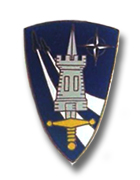
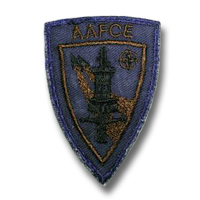
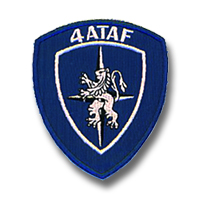
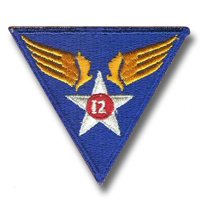

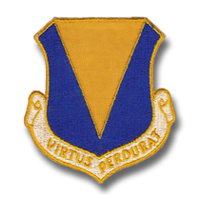
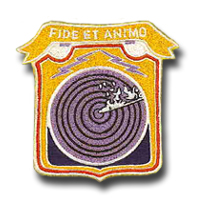
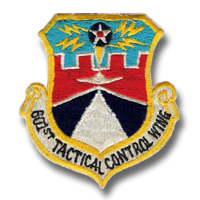
 601st
AC&W Sqd
Patch
601st
AC&W Sqd
Patch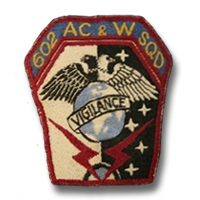 602nd
AC&W Sqd
Patch
602nd
AC&W Sqd
Patch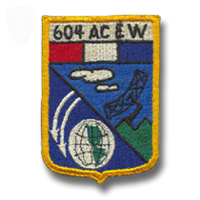
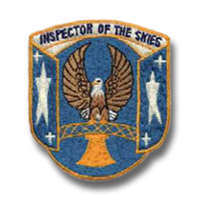 606th
AC&W Sqd
Patch
606th
AC&W Sqd
Patch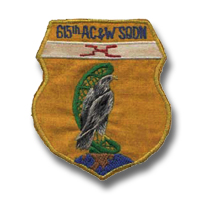
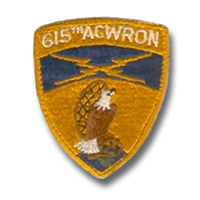
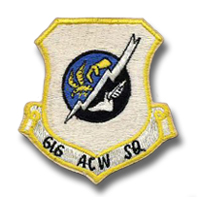
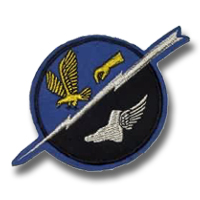
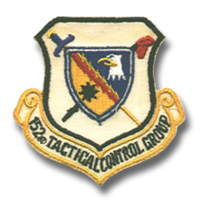
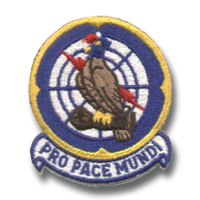
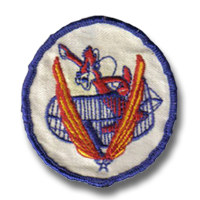
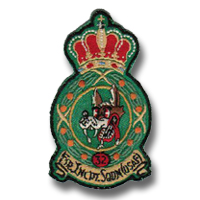
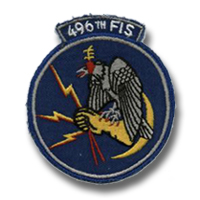
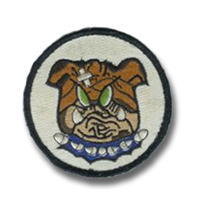
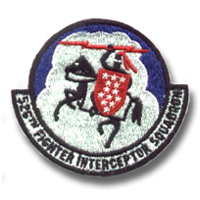
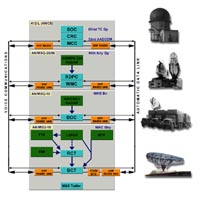
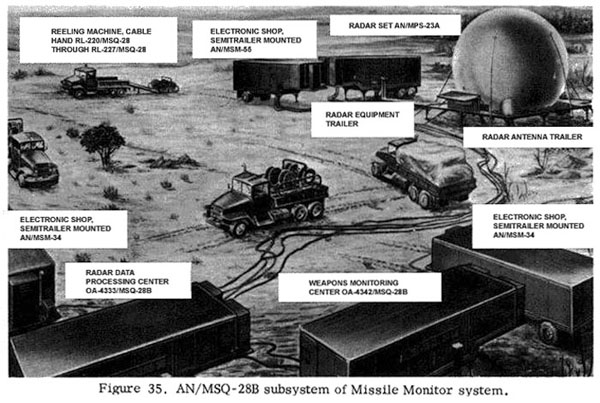
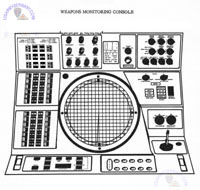 WMC Console
WMC Console 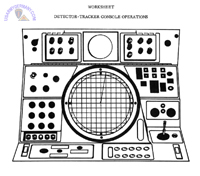 D-T Console
D-T Console 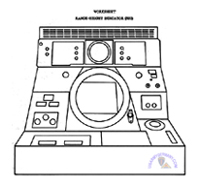 RHI Console
RHI Console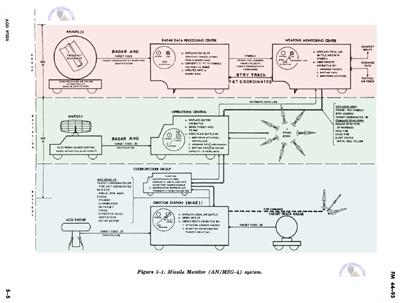

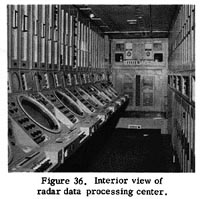
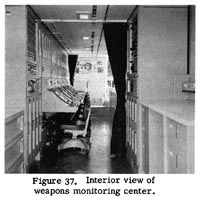
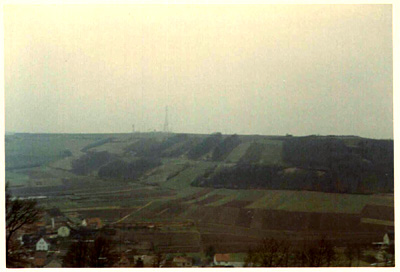
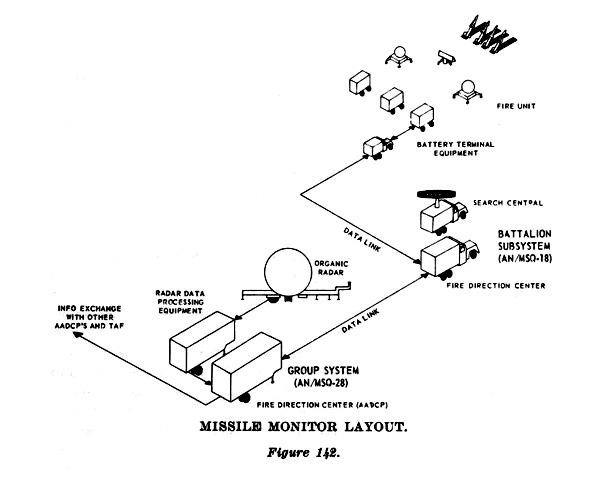
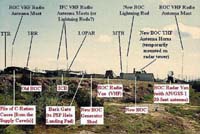
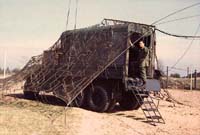
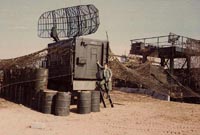
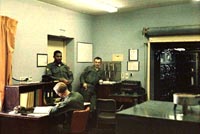
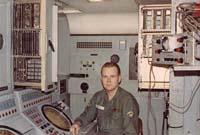
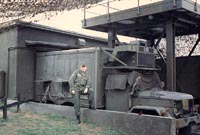
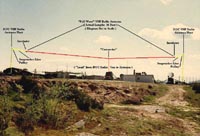
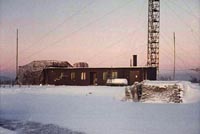
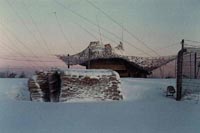
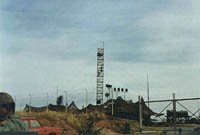
%20sm.jpg)
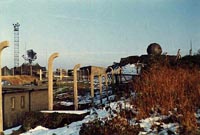
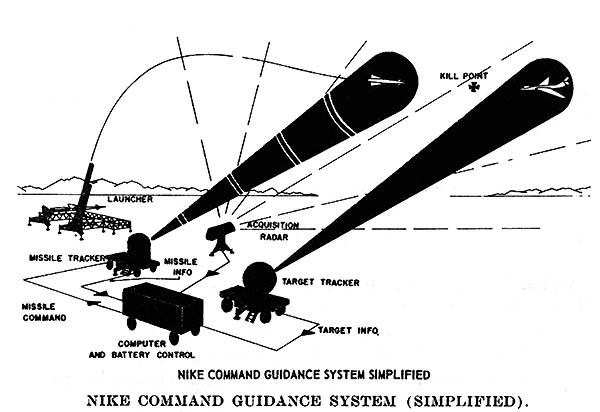
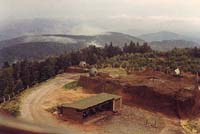
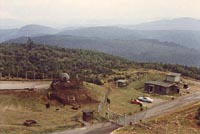
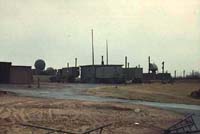
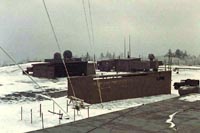
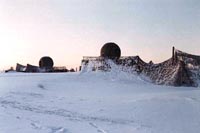
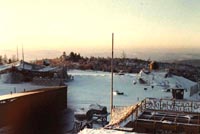
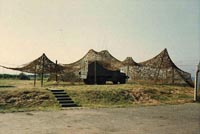
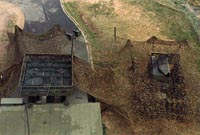
%20sm.jpg)
